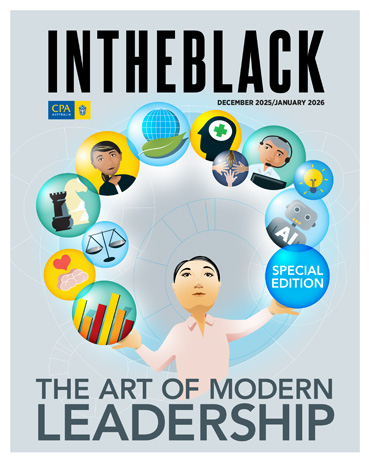Loading component...
At a glance
By Emma Foster
When a key employee leaves an organisation, there is a high risk that the knowledge they have built up will walk out the door with them.

It is an age-old problem, but the stakes are getting higher. Know-how has become a prized advantage in the shift to a knowledge-based economy at a time when job mobility remains high.
“Knowledge is a key strategic asset in any organisation,” says Nadia Taylor, CEO of workplace strategy firm Mapien. “A lot of the time, businesses aren’t great at capturing it, particularly when it comes to the tacit wisdom employees have gained over years.”

What is the trick to retaining what employees know? It lies squarely in a firm’s ability to create a culture of knowledge sharing, says Jessica May, learning and development manager at HR agency HumanX.
“What you don’t want is a culture in which the employee’s exit is the trigger to capture their knowledge,” May says. “Instead, you want to build a collaborative culture where information is shared openly and widely, with the right systems and processes in place to support it.”
Explicit knowledge or tacit knowledge?
A starting point is to recognise the two types of organisational knowledge. “Explicit” knowledge includes how processes work and information that is easily documented and transferable.
“Tacit” knowledge is insights learnt from personal experience and innovation that is stored in the individual’s mind and is often quite challenging to articulate and share formally.
The good news is that advances in technology have made it easier to democratise explicit knowledge, according to Professor Paula Brough, director of the Centre for Work, Organisation & Wellbeing at Griffith University.
"Knowledge is a key strategic asset in any organisation. A lot of the time, businesses aren’t great at capturing it, particularly when it comes to the tacit wisdom employees have gained over years."
“To navigate an organisation 20 years ago, you’d need personal knowledge of who to contact and in which department to get the best results,” Brough says. “Largely that’s diminished with the introduction of AI, work automations, chatbots and the other technology systems we have today.
Cloud-based storage of key projects and policies also means other team members have access to the same formal documents; whereas in the past, it was easily lost on individual hard drives.”
Capturing employees’ tacit knowledge often remains elusive, she says. “It’s the subjective knowledge of how things are ‘actually’ done that’s often most valuable, and organisations can underestimate the impact when it’s lost.”
7 tips to upskill your workplace
Trading tacit knowledge
With an eye to lower the risk, Taylor says organisations are testing different approaches to encourage the sharing of wisdom between employees.
“Some are creating internal ‘capability marketplaces’,” she says. “The expertise of each employee is published and when someone needs to skill-up on a particular topic, they can find an internal expert and be mentored by them.”
Others are creating knowledge-accelerator programs – where key employees shadow others to absorb their tacit knowledge – or are sharing employee insights in other engaging formats.
"What you don’t want is a culture in which the employee’s exit is the trigger to capture their knowledge. Instead, you want to build a collaborative culture where information is shared openly and widely, with the right systems and processes in place to support it."
“Some run internal podcast series, where employees will discuss how they’ve tackled challenges or take a ‘day in the life of’ approach, which can help bring life to, and retain, that tacit knowledge,” May says.
“When an employee does leave, instead of just a one-on-one exit interview, some workplaces open it up to interactive sessions with the whole team so everyone can hear their insights.”
Microlearning in the workplace
Microlearning is also becoming popular, Taylor says.
“While traditionally you might have gone to a full day training course to cover 100 things, microlearning breaks it into five-minute segments, making that knowledge far more accessible at a time when an employee really needs to know it,” she says.
“Another approach we’re taking in our own business is to record our key leaders’ meetings, and when someone says something brilliant that would benefit the whole team, we extract that from the recording and find ways to share it.”
She advises capturing lessons from major projects in the same way – on the fly rather than waiting until the end as most organisations do.
“During project update meetings, we record and share those key insights – good and bad – straight away, while they’re fresh.”
Does your tech stack deliver?
Making access to workplace knowledge easy
While capturing knowledge gems is vital, they are of little use if people cannot find them, warns May, who says there are plenty of knowledge management platforms out there to suit the maturity level and aims of different organisations.
“It could be as simple as storing recordings and documents in a SharePoint folder or using an HR system like Employment Hero or Atlassian’s Confluence where pages are assigned to products or projects that are accessible to everyone in the organisation,” she says.
Taylor adds that a custodian, not just an administrator, is needed to oversee a knowledge management platform.
“It’s like any database – people won’t bother putting information in unless they see some benefit for themselves. If they do, it becomes self-reinforcing.”
She emphasises that the knowledge-collection process does not need to be perfect. “Even if the wisdom is captured in a rough and ready video on your phone, that’s okay.
"It doesn’t need to be a perfectly choreographed session because something is better than nothing.”

